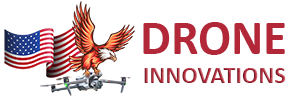The advent of drone technology has revolutionized various industries, from agriculture to filmmaking. One area drones have shown significant promise is roof inspections. Traditionally, roof inspections require ladders, scaffolding, or even cranes, witch posed safety risk and incurred high cost. Drones however, offer a safer, more efficient, and cost-effective alternative. this blog explores how drones are transforming roof inspections and the benefits they bring to homeowners and businesses alike.
Advantages of using drones for roof inspections:
- Safety First
Roof inspections have always been risky. Climbing ladders and walking on potentially unstable surfaces expose inspectors to falls and other injuries. Drones eliminate the need for physical presence on the roof, drastically reducing the risk of accidents. - Cost-effective
Traditionally methods of roof inspections are labor intensive and require specialized equipment, witch can be expensive. Drones streamline the process, reducing the need for extensive manpower and equipment. This translates to lower inspection costs for property owners. - Efficiency and speed
Drones can cover large areas in a fraction of time it would take an inspector to do so manually. They can quickly capture high resolution images and videos, allowing for comprehensive assessment of the roof’s condition. This efficiency is particularly beneficial in post storm scenarios where multiple inspections may be required. - High quality data collection
Equipped with high resolution cameras and sensors, drones can capture detailed images and videos from various angles, including hard to reach areas. Some drones also come with thermal imaging capabilities, which can detect issues like water leaks and insulation problems that are not visible to the naked eye. - Accessibility
Drones can easily access areas areas that are difficult or dangerous to reach. This includes steep roofs, tall buildings, and areas obstructed by obstacles such as trees and power lines. This accessibility ensures a thorough inspection without compromising safety.
Conclusion
The integration of drones into roof inspections marks a significant advancement in the field. By enhancing safety, reducing cost, and improving efficiency and data quality, drones offer a modern day solution to an age old problem. As technology continues to evolve, the role of drones in roof inspections is likely to expand, making them an indispensable tool for property maintenance and assessment. Weather you are a homeowner, a roofing contractor, or an insurance adjuster, embracing drone technology can lead to a sfer, faster, and more accurate roof inspections.
John Delaney FAA part 107 licensed drone pilot

